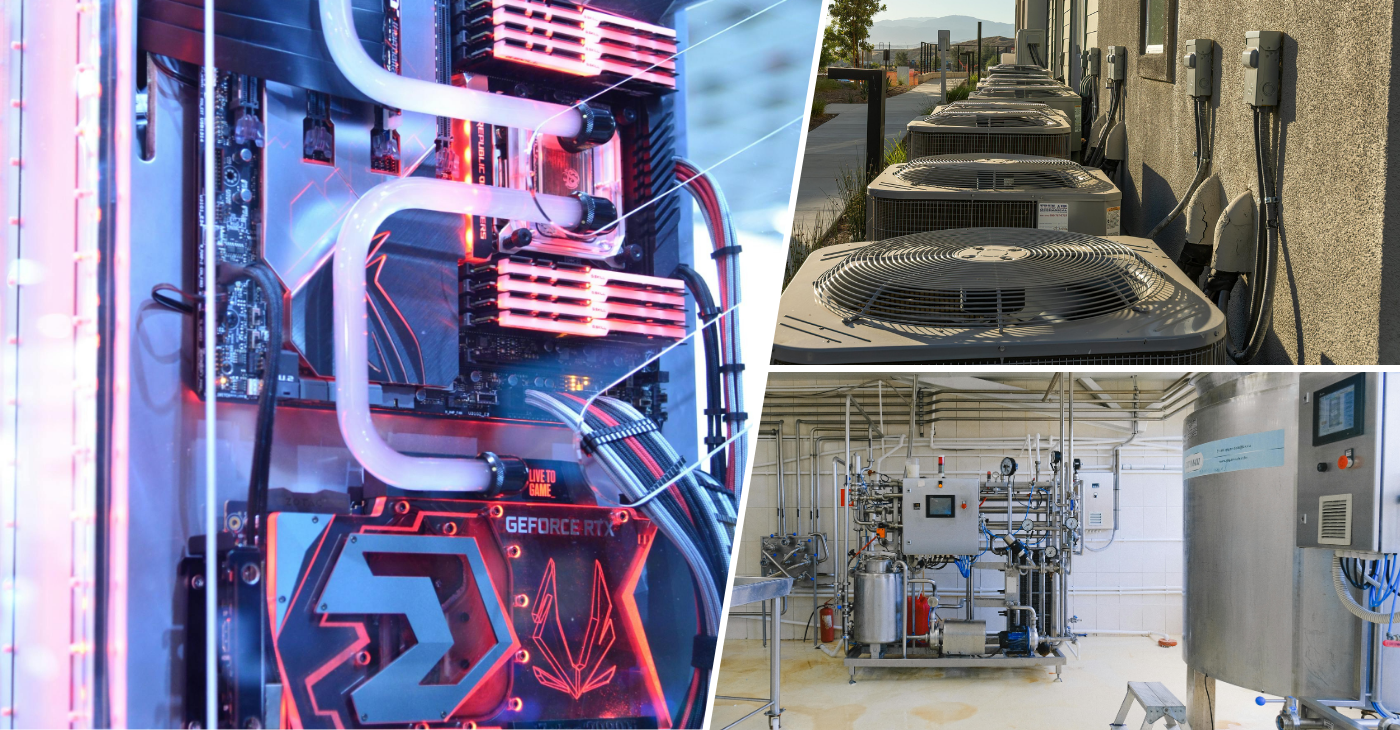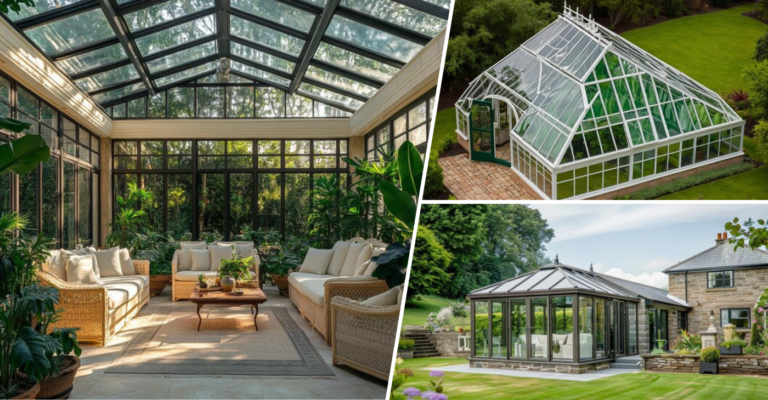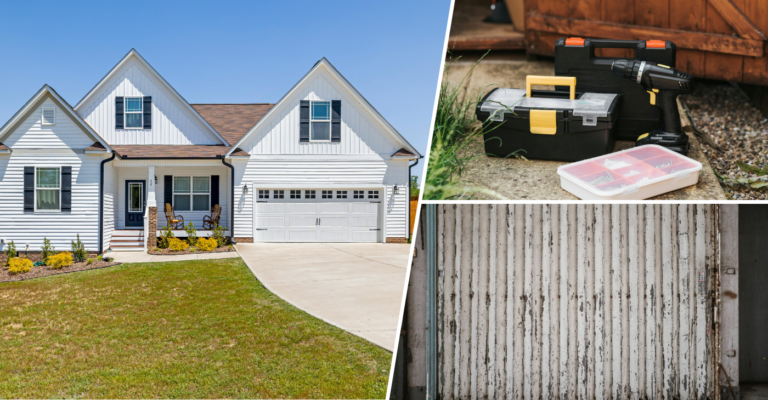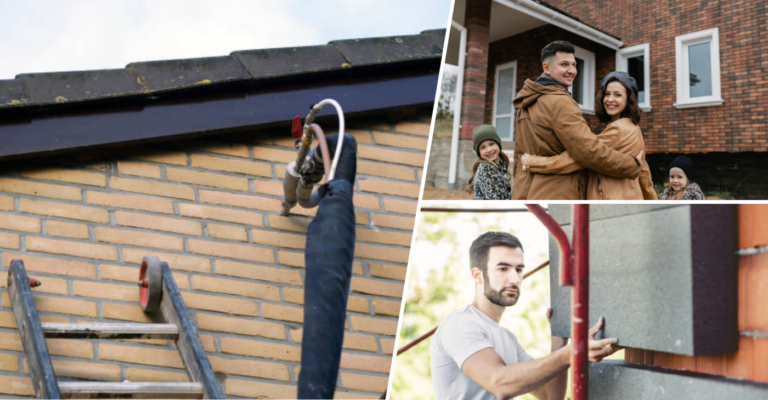Guide: What is a multi zone HVAC system?
What is a multi zone HVAC System? A multi zone HVAC system divides a building into separate zones, each with its own thermostat and controls. Unlike single-zone systems, it allows specific temperature settings for different areas, which is ideal for spaces with unique climate needs. By heating or cooling only the necessary zones, it boosts comfort, reduces energy use, and minimises wear on the system. This guide explains how multi zone HVAC systems work, their benefits, types, and key installation factors. Whether for a large home, commercial building, or any space with varied room use, a multi zone HVAC system offers efficient and customizable climate control tailored to each area.
What is a multi zone HVAC system?
A multi zone HVAC system is a climate control setup that divides a building into zones, each with its own thermostat and controls. This design allows each area to have its own temperature, with heating and cooling tailored to meet specific needs. Unlike single-zone systems, which treat the entire building as one, multi zone systems adapt to how each zone is used, improving comfort and saving energy.
Multi zone systems use dampers within ductwork or individual mini-split units for each zone. Each thermostat can adjust the airflow to its zone, preventing unnecessary cooling or heating in unused areas. This precise control is ideal for spaces with different climate needs, like multi-level homes, large residential buildings, or commercial spaces. By conditioning only occupied areas, multi zone systems reduce energy costs, extend equipment life, and reduce wear on HVAC components. To summarise, what is a multi zone HVAC system? It’s a system that provides flexible temperature settings throughout a building.
How does a multi zone HVAC system work?
Many ask, “What is a multi zone HVAC system and how does it work?” It uses individual thermostats to regulate each zone’s temperature. A multi zone HVAC system splits a building into zones, with each zone having its own temperature control. It uses thermostats, dampers, and sometimes mini-split units. Each thermostat regulates its zone and signals a central system to adjust airflow. This central system opens or closes dampers to manage air in each area, heating or cooling only where needed.
In ductless setups, mini-split units handle temperature directly in each room, ideal for spaces without ductwork. A central panel coordinates zones for efficiency. This setup prevents energy waste by focusing on zones needing more control, like sunny rooms or those with exterior walls.
Multi zone systems work well in large homes, commercial buildings, and mixed-use spaces. They provide custom heating and cooling, save energy, and meet the needs of varied spaces, from open rooms to small offices.
Benefits of multi zone HVAC systems
What is a multi zone HVAC system’s benefit? It allows for specific temperature control in each zone, saving energy.
- Personalised comfort in every room
Multi zone HVAC systems allow you to set different temperatures for each room. This lets each space have its own climate, providing greater comfort throughout the building. For example, you can keep the living room cool while using minimal conditioning in rooms that aren’t occupied.
- Energy savings by conditioning only in use spaces
These systems help save energy by only heating or cooling the spaces that are in use. This targeted control reduces energy waste and lowers utility bills, making multi zone HVAC an efficient choice.
- Improved indoor air quality
Multi zone systems also improve air quality by controlling airflow separately in each zone. This stops dust and allergens from spreading between rooms, creating a cleaner, healthier environment.
- Extended HVAC system lifespan
With reduced demand on the central HVAC unit, multi zone systems experience less wear and tear. This means the system lasts longer and needs fewer repairs, which saves on maintenance costs over time.
- Ideal for homes and commercial spaces
The benefits of multi zone HVAC systems-energy savings, cleaner air, and customised comfort-make them a smart choice for both residential and commercial buildings.
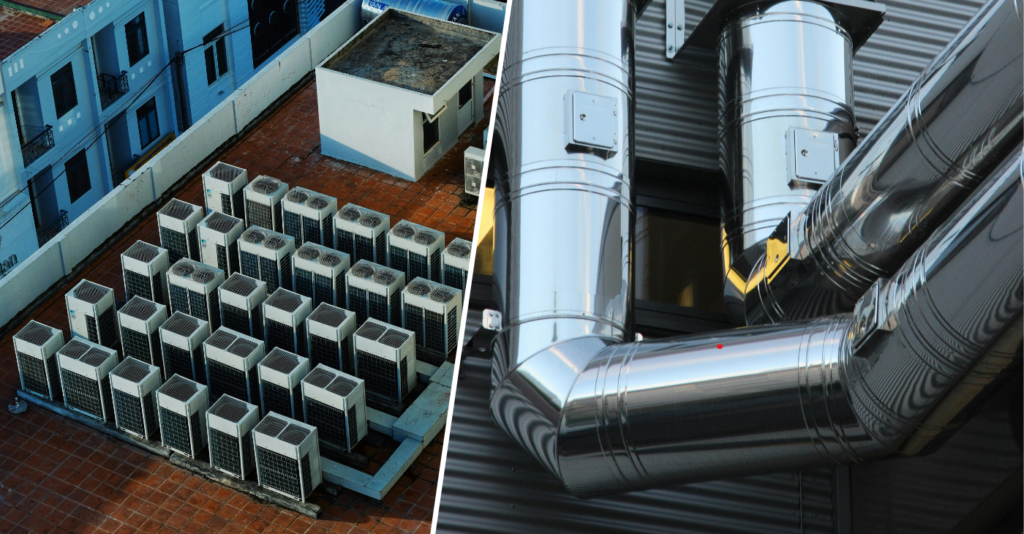
Types of multi zone HVAC systems
Multi zone HVAC systems come in two main types: ducted systems with dampers and ductless mini-split systems. Here are main benefits:
Ducted systems with dampers
Ducted systems use centralized ductwork fitted with motorized dampers. These dampers control airflow to each zone based on signals from individual thermostats. Ducted systems are cost-effective for buildings with existing ducts. They work well for large spaces where airflow needs to be directed precisely.
Installing dampers in the ductwork provides zone-specific temperature control without extra HVAC units. These systems are ideal for commercial buildings or homes where specific zones need independent temperature management.
Ductless mini-split systems
Ductless mini-split systems are ideal for buildings without existing ducts. Each room has its own air-handling unit connected to an outdoor compressor. This allows separate temperature control in each zone without using ductwork.
Mini-splits work well in older buildings or areas with limited space for ducts. They are also energy-efficient, as there is no energy loss from ducts. While mini-splits cost more initially, they provide precise control, making them a good option for spaces with irregular room usage.
Choosing the right system
The choice between ducted and ductless systems depends on the building’s layout and existing infrastructure. Ducted systems are economical for properties with ducts, while mini-splits offer flexible zone-specific control. Both types improve comfort, save energy, and are great for modern construction projects. Consulting with an HVAC professional can help in selecting the best system based on layout, usage, and energy goals.
Installation considerations for multi zone HVAC systems
Installing a multi zone HVAC system needs detailed planning based on the building layout, current HVAC setup, and number of zones. In properties with existing ducts, adding dampers can create effective zones, but the ductwork may need modifications to balance airflow.
Ducted multi zone systems are often harder to retrofit, as they may need structural reinforcement to handle multiple zones.
Ductless mini-split systems, however, simplify installation by removing the need for ducts. Each zone has a separate air-handling unit, making mini-splits ideal for older homes, new additions, or properties without ductwork. However, the need for individual units per zone can increase costs, especially in larger spaces. An HVAC assessment is essential to identify the best setup. This includes reviewing airflow, heat load, and control configurations to create a balanced and efficient system.
Cost of multi zone HVAC systems
Installing a multi zone HVAC system usually costs between $2,000 and $12,500. The price depends on factors like the number of zones, the type of system, and the current infrastructure.
For ducted systems, existing ductwork can lower installation costs. However, additional dampers and controls may be needed to manage airflow across zones, which can add to the expense.
Ductless mini-split systems often have higher initial costs. Each room or zone requires its own air-handling unit connected to an outdoor compressor, increasing equipment and installation expenses. This can be especially costly in larger buildings with multiple zones.
Other cost factors include smart thermostats, upgraded control systems, and any structural modifications required for the setup. A professional HVAC quote can provide an accurate estimate based on the specific needs of the project.
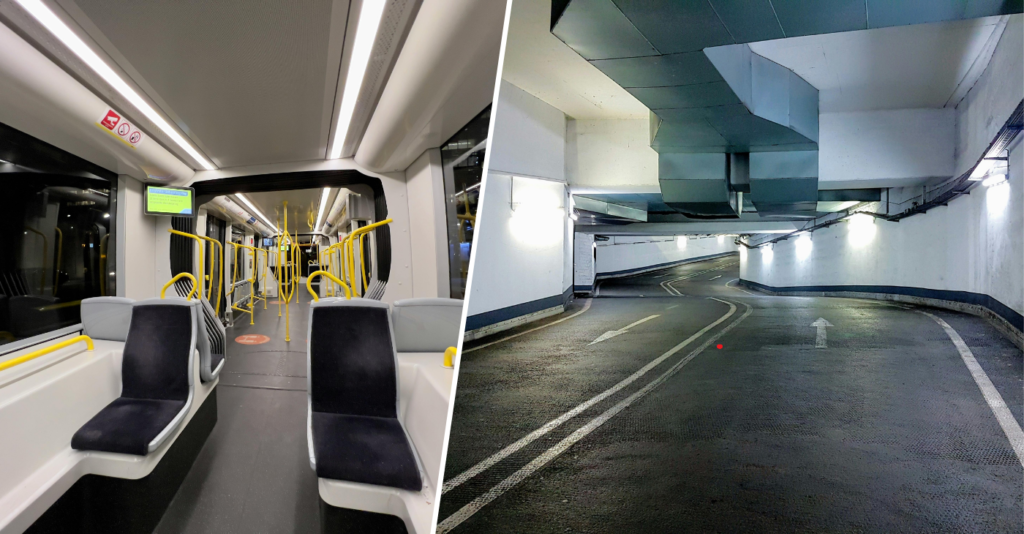
Energy efficiency of multi zone HVAC systems
When researching energy-efficient HVAC options, “What is a multi zone HVAC system?” is a common inquiry. Multi zone HVAC systems improve energy efficiency by only conditioning occupied zones. This targeted control minimises energy use in unused rooms, cutting down on waste. By focusing airflow on active areas, these systems can reduce energy bills by 20-40%.
This efficiency is valuable in buildings with diverse needs, such as those with high ceilings, large windows, or multiple levels. Multi zone systems prevent unnecessary conditioning, ensuring comfort while reducing strain on HVAC equipment.
These systems also support green building standards by allowing precise control over temperature in each area. This alignment with sustainable practices not only reduces energy costs but also extends the HVAC system’s lifespan, adding both financial and environmental benefits.
Maintenance tips for multi zone HVAC systems
Routine maintenance is essential to keep multi zone HVAC systems efficient. Start by cleaning or replacing air filters regularly. Clogged filters reduce airflow and make the system work harder, which impacts energy efficiency.
Dampers need periodic inspections since they are key to controlling airflow in each zone. Dust or debris can block dampers over time, reducing their ability to regulate temperatures properly. Keeping dampers clear ensures balanced airflow and effective temperature control.
For ducted systems, check the ductwork for leaks or damage. Any leaks can reduce the system’s efficiency and increase energy costs. In ductless mini-split systems, inspect refrigerant levels and clean coils to maintain optimal heating and cooling performance. Regular maintenance minimizes wear and tear, extending the system’s lifespan and ensuring smooth operation across all zones. Read more about 7 HVAC coil cleaners.
Common issues with multi zone HVAC systems
Improper Damper Functioning
Dampers control airflow to each zone. When they get blocked or misaligned, temperatures can become uneven across zones. Regular damper inspections help keep airflow balanced and maintain comfort in each area.
Thermostat malfunctions
Each zone has its own thermostat, which can sometimes misread temperatures or fail to communicate with the main control system. Faulty thermostats may lead to incorrect temperature settings. Upgrading to smart thermostats can improve reliability and allow for remote monitoring.
Airflow inconsistencies in ducted systems
In ducted systems, airflow inconsistencies often come from duct leaks or poor sealing. This can create temperature imbalances and reduce efficiency across zones. Regular duct inspections and sealing are necessary to maintain even airflow.
Frequent filter cleaning in mini-split systems
Ductless mini-split systems require regular filter cleaning to prevent dust buildup, which can reduce airflow and cooling efficiency in individual zones. Cleaning or replacing filters regularly ensures each unit operates effectively and keeps air quality high.
Is a multi zone HVAC system right for your home?
People often ask, “What is a multi zone HVAC system?” because it’s ideal for multi-story buildings with varied temperature needs. It works well in large homes and multi-story buildings. They provide precise temperature control in each area, so you can adjust heating and cooling based on the specific needs of each floor or room.
They are also ideal for homes with complex layouts or hard-to-control areas. Rooms with high ceilings, large windows, or exterior walls often need extra heating or cooling. Multi zone systems target these areas without affecting the entire home.
For homes with irregular use patterns, like guest rooms or basements, zoning allows you to only heat or cool spaces as needed. This reduces energy use in seldom-used areas, lowering operating costs and increasing efficiency.
Conclusion
What is a multi zone HVAC system’s benefit? It allows for specific temperature control in each zone, saving energy. For properties with complex layouts or varied climate needs, it offers major benefits. Multi zone systems provide customized comfort, significant energy savings, and better indoor air quality. They also reduce wear on HVAC parts, which extends system life. While multi zone setups need careful planning and upkeep, their long-term benefits make them a smart investment. An HVAC professional can help design an efficient, tailored solution for each unique space. Read more about HVAC questions and answers.

